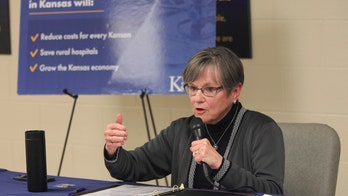Pollster Lee Carter breaks down the 2016 exit polls
A look at the voters that decided the election
NATIONAL
Donald Trump’s victory today came as a deeply divided country opted for change. His strength among white voters – and particularly working-class whites – led to an impressive performance in the upper Midwest, and he was able to attract enough support from blacks and Hispanics to hold Hillary Clinton at bay.
The election was marked by a record gender gap and widespread voter concern about the candidates’ honesty. Trump also weathered concerns about his temperament, qualifications, and treatment of women.
Trump won among men by 12 percentage points, while women backed Clinton by 12 points. This 24-point gender gap eclipses the previous record of 22 points, set in the 2000 race between George W. Bush and Al Gore.
Trump dramatically improved on Mitt Romney’s performance among men – the Republican won by 7 among men in 2012. Clinton only improved slightly on President Barack Obama’s 11-point margin among women.
Plus, women made up 52 percent of the electorate, down one point from 2012 and similar to 1996 and 2000 (52 percent).
She won blacks by 80 points, down from Obama’s 87-point margin in 2012. Hispanics opted for Clinton by 36 points, a dramatic decrease from Obama’s 44-point win in the last election.
Nearly three-in-ten Hispanics (29 percent) voted for Trump, more than the 27 percent Romney received in 2012.
Trump won by 21 points among white voters, an uptick from Romney’s 20-point edge in 2012 and the widest Republican margin among whites since at least 1992. White men voted for Trump by 32 points, while white women broke for him by 10 points.
Some of Trump’s strongest support came from white voters without a college degree (67 percent) – and particularly white men without a degree (72 percent).
Voters with a college degree favored Clinton by nine points, though college-educated whites went for Trump, 49-45 percent.
Trump also ran up big margins among core Republican constituencies, including conservatives (81 percent) and white evangelicals (81 percent). These numbers were comparable to Romney’s performance (82 percent among conservatives, 78 percent among white evangelicals).
Democrats made up 37 percent of the electorate and Republicans 33. That is a decrease in the Democratic, when they held a 38-32 percent edge.
Union households – long a stronghold of Democratic support – went for Clinton by eight points. That’s a 10-point drop from Obama’s total last time, and the lowest union support for a Democrat in the past 20 years.
THE CANDIDATES
Four-in-ten voters (39 percent) were looking for a candidate who could bring about needed change. These voters favored Trump, 83-14 percent.
Clinton won those who wanted a candidate who cares about people like them by 23 points, by 40 among those who prioritized judgment, and by 82 among those who said experience was the most important quality to their vote.
After a campaign dominated by various candidate scandals and not the issues, voters had unfavorable opinions of both candidates. Clinton’s favorability was under water by 10 points (44 percent favorable and 54 percent unfavorable). Still, that’s better than views of Trump: 38 percent favorable, 60 percent unfavorable.
Voters were put off by Trump’s controversial comments about women. Fully seven-in-ten voters said his treatment of women bothered them. These voters favored Clinton, 65 to 29 percent.
Controversy over Clinton’s use of a private email server while secretary of state reemerged in the final days of the campaign, and 63 percent of voters were bothered by her email practices. This hurt Clinton, as 70 percent of those bothered by her email scandal went for Trump.
Against this backdrop, just 41 percent cast their vote because they strongly favored their candidate. More said they liked their candidate but had reservations (32 percent) or disliked the other candidates (25 percent).
Trump’s supporters were split between favoring their candidate (37 percent), liking him but with reservations (33 percent), and voting against Clinton (28 percent).
Clinton voters, on the other hand, were more likely to say they favored their candidate (46 percent) than say they liked her with reservations (32 percent) or disliked Trump (21 percent).
Voters did not see either candidate as honest and trustworthy, though ratings were slightly better for Clinton (36 percent) than for Trump (33 percent).
Clinton was seen as the more qualified candidate and the one with the temperament to lead. Over half (55 percent) of voters said Clinton had the right temperament. Far fewer – 35 percent – said the same of Trump.
Voters had similar evaluations of the candidates’ qualifications: 52 percent said Clinton was qualified for the job, compared to 38 percent who said the same of Trump.
MOOD OF THE COUNTRY
Trump’s win came as a majority of Americans were dissatisfied (46 percent) or angry (23 percent) with the way the federal government is working. Trump won big among these “angry” voters.
Half of the electorate thinks the government is doing too many things better left to business and individuals. That’s about the same as 2012 (51 percent).
More than six-in-ten voters have a gloomy assessment of the economy: 41 percent rate the economy as “not so good” and another 21 percent say “poor.”
Still, that’s an improvement from 2012: 45 percent not so good and 31 percent poor.
Although they may not be happy with the way the government is working or the state of the economy, a 53-percent majority approves of the job Obama is doing as president. Bill Clinton left office with a 57-percent approval rating in 2000, while Bush had 27-percent approval in 2008.
Despite the president’s approval rating, more voters think the next commander-in-chief should adopt more conservative policies (48 percent) than continue Obama’s policies (28 percent) or adopt more liberal ones (17 percent).
E pluribus unum? After an election season that included protests of police use of force against minorities and claims by Trump that the system was rigged against him and his supporters, Americans are deeply divided about the fairness of U.S. institutions.
Overall, a 48-point plurality thinks the nation’s criminal justice system is unfair to blacks. Slightly fewer – 43 percent – think the system is fair to all. Black voters are particularly likely to feel the system treats them unfairly (81 percent).
THE ISSUES
For more than half of voters (52 percent), the economy is the most important issue facing the country. Far fewer cite terrorism (18 percent), foreign policy (13 percent) and immigration (13 percent).
More voters trust Trump to handle the economy: 49-46 percent. Clinton is trusted by more to handle foreign policy, 52-43 percent.
For two-in-ten voters (21 percent), appointments to the Supreme Court was the most important issue to their vote. These voters broke for Trump, 56-41 percent.
Seven-in-ten voters think illegal immigrants currently working in the United States should be offered a chance to apply for citizenship (70 percent), rather than being deported (25 percent). In 2012, 65 percent said chance for citizenship and 28 percent favored deportation.
Clinton won those who believe illegals should have a chance at citizenship by 26 points. Trump dominated among those who prefer deportation (+70 points).
Trump’s signature immigration proposal – to build a wall along the Mexican border – received support from 41 percent of voters. Three-in-ten Latinos (29 percent) support the idea.
WISCONSIN
Trump’s strength among working-class white voters carried him to an upset win in Wisconsin, as he became the first Republican to win the Badger State since 1984.
Trump did better among white men (59 percent) than Romney did in 2012 (56 percent). Clinton garnered 48 percent among white women, well below the 53 percent Obama got in 2012.
White voters without a college degree proved to be the bulwark of Trump’s support, as he racked up a 63-32 percent win among this group. College-educated whites broke for Clinton by a narrower 10-point margin.
Trump’s criticism of NAFTA and other U.S. trade deals played well in Wisconsin. Half of Wisconsin voters think international trade takes away U.S. jobs (50 percent), while 35 percent think it creates jobs. And those who say it takes away jobs heavily favored Trump: 63-32 percent.
Union workers have long been a source of support for Democrats in Wisconsin – two-thirds (66%) voted for Obama in 2012. But Trump cut into this margin, as Clinton only won 52 percent of the union vote.
Clinton’s use of a private email server and the subsequent FBI investigation also played a big role: 66 percent of Wisconsin voters said Clinton’s email practices bothered them. These voters broke for Trump by a 50-point margin.
Trump spent time in Wisconsin toward the end of the campaign. That, combined with the FBI’s additional investigation into Clinton’s emails, may have tipped the state into Trump’s column. He won a majority of late-deciding voters.
OHIO
As Ohio goes, so goes the nation: the last seven Republicans who have won the state have won the presidency. Donald Trump flipped the state into the Republican column this year.
Trump’s criticism of international trade played particularly well in Ohio. Nearly half of Ohio voters (48 percent) think trade with other countries takes away jobs, compared 32 percent who think it creates jobs.
Those who think trade hurts jobs broke for Trump by 67-29 percent margin.
His message on trade also appears to have helped him among union voters. He won a majority of union members – 52 percent – a dramatic improvement over the 37 percent Romney took home in 2012.
White evangelical voters made up one-third of the electorate (33 percent), up from 31 percent last time around. Trump made major inroads among these voters, winning 76 percent – an improvement on Romney’s 69 percent.
In 2012, Obama won among voters without a college degree, 53-46 percent. This year, that dynamic flipped: Trump won those without college degrees by 4 points. He won college graduates by eight points.
Clinton was also hurt by a downturn in support from black voters. While African-Americans turned out (they made up 14 percent of the electorate this year and 15 percent in 2012), she won 90 percent of them – down from Obama’s 96-percent win.
FLORIDA
Trump won the Sunshine State thanks to an uptick in support among non-white voters.
The white share of the electorate has continued to decline – from 71 percent in 2008, to 67 percent in 2012, and 62 percent this year. Trump won Florida’s white voters by 31 points.
Trump racked up large margins among both college-educated whites (+27 points) and working class whites (+35 points).
Florida’s Latino voters turned out in force, accounting for 19 percent of all voters, up from 17 percent last time around. Clinton won 63 percent of Latinos, up from the 60 percent that Obama won in 2012.
Trump won by 13 points among Florida’s sizable Cuban-American population, a dramatic reversal of Obama’s two-point win in 2012.
Trump also doubled the support Romney received from black voters, tallying 8 percent this year.
Nearly half of all Floridians felt Obama’s signature health care law went too far (46 percent). Trump won these voters by a whopping 78-17 margin.
Florida has a large share of seniors, a group that favored Trump by 18 percentage points. Seniors went for Romney by 17 points in 2012.
NORTH CAROLINA
With the first African-American president no longer on the ballot, the electorate in North Carolina was less diverse than in 2012 – which led to a win for Trump.
White voters made up 71 percent of the electorate this year, and broke for Trump by 30 points. Trump amassed huge wins among working-class whites (+44 points) and white evangelicals (+64 points).
The “Obama coalition” did not warm to Clinton. She underperformed among both non-whites and young voters.
Blacks accounted for 19 percent of the electorate, down from 23 percent in 2012. While Clinton won blacks by 83 points, that was a decrease from Obama’s 92-point margin. Clinton’s margin among Hispanics (+20 points) was also a notable drop from Obama’s 37-point margin in 2012.
Young voters propelled Obama to victory in North Carolina in 2008 and kept the state close in 2012 – but Clinton won 60 percent of the young vote this year, well off the 67 percent Obama won last time.
Racial tensions in North Carolina came to the forefront this year after the killing of a black man by Charlotte police officers in September and allegations that the state curtailed blacks’ access to early voting. Voters were divided on whether the justice system treats all people fairly (41 percent) or treats blacks unfairly (47 percent). Most blacks (81 percent) feel the system treats them unfairly.
COLORADO
The changing Colorado electorate provided Clinton a much-needed swing state win. She benefitted from strong support among Latinos, young voters and newcomers to the state.
Latino voters accounted for 13 percent of the Colorado electorate, down from 14 percent in 2012. Clinton won Hispanics by 40 points, down from Obama’s 52-point margin last time.
Trump won among white voters, 45-42 percent.
Clinton racked up a sizable 10-point win among young voters. Seniors split: 49 percent for Clinton, 47 percent for Trump.
Roughly six-in-ten Colorado voters were not born in the state. Clinton won these non-natives by seven points.
Trump won Colorado’s sizable collection of independent voters by three points. Romney won independents by four points in 2012.
Trump was out of step with Coloradans on immigration. By more than four to one, more voters believe illegal immigrants working in the U.S. should have a chance at citizenship (78 percent) than think they should be deported (16 percent).
Voters who favor a path to citizenship broke for Clinton by 25 points.
Nearly one-third of Colorado voters (31 percent) are angry with the way the government is working these days. These “angry” voters overwhelmingly supported Trump (67-18 percent). Trump also won big among Colorado’s rural voters (+20 points).
METHODOLOGY
Edison Research conducted this exit poll for Fox News and interviewed approximately 24,500 voters as they left randomly-selected polling places around the country.





